Introduction: Hello gardeners today are back with a great information of creeper plants care and growing. Creeper plants are generally considered to be small, vine-like plants that grow very close to the ground and they are also referred to as procumbent plants. Creeper plants are a group of plants or vines that need the support of some kind in your garden, so creeper plants care is your utmost priority in your garden.
A guide to growing creeper plants and care in the home garden
Creeping is applied to a plant’s growth pattern and the plant grows low to the ground and sends down roots at intervals from its main body. Creeper plants spread horizontally rather than growing vertically. Some spread by stem growth, developing roots on the stem as they produce along the ground. Still, others spread underground, sending up new plants from spreading roots and some plants start with vertical stems that drop to the ground and root.
Creepers generally refer to those plants which have a weak stem and are extended horizontally along with the soil on the ground as they cannot stand upright. The creeper plants have very fragile, long, thin stems that can neither stand erect nor support all its weight. They add an extra zing to your home, garden and looking stunning. Some even produce a very excellent scent to refresh your senses.
Most vines have a creeping growth pattern, but remaining plants do as well. Other examples of plants that creep include creeping thyme, phlox, mint, bamboo, potentilla, strawberries, honeysuckle, sweet potato vines or ornamental, wild ginger, plums, and wild roses to name only a few. What are we waiting for? let us get into the creeping plants care and management.
Creeper plants that spread by runners
Creeping plants spread by stolons or rhizomes. Stolon plants are above-ground stems and rhizomes are below-ground stems that form a new plant at the end or along their length. Bamboo and several other types kinds of grass have underground rhizomes that sprout new plants as they grow. Hen and chicks (Sempervivum spp.), creeping potentilla (Potentilla reptans) and lilyturf (Liriope spicata) spread by stolons or rhizomes.
Creeper plants that spread by roots
Creeping plants spread by sprouting new plants from the roots and the example is Wild Ginger (Asarum canadense). This is grown for its ornamental value, although the roots do have a spicy flavor similar to culinary ginger.
Some examples of creeping plants
Several highly prized creeping plants are flowering ground covers. The creeping junipers (Juniperus) are popular. They are ground-hugging shrubs and valued for their evergreen foliage and ability to curb erosion. Japanese spurge (Pachysandra terminalis), evergreen, is classified as a perennial, rather than a shrub.
Angelina stonecrop has a flower head some years, but most people do not produce it for the blooms (which they sometimes remove). Spotted deadnettle (Lamium maculatum) plant is valued equally for its flowers and its variegated leaves. For a different look and a plant that stays about as short as a plant possibly, try Scotch moss (Sagina subulata Aurea) or the similar Irish moss (Sagina subulata).
You should not miss the Organic Container Gardening Ideas.
Some examples of creeping plants are given below;
Strawberry
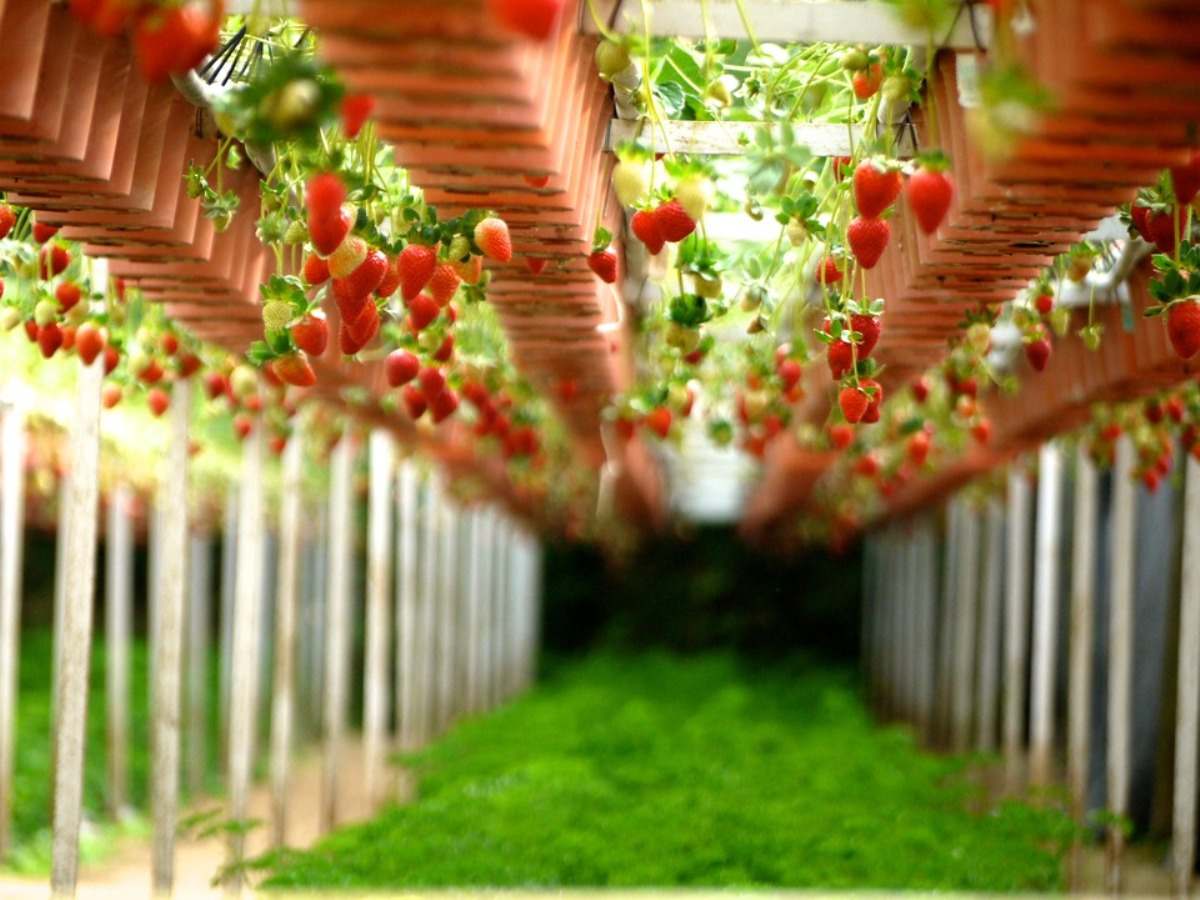
Strawberry plants require 6 to 10 hours a day of direct sunlight, so choose your planting site accordingly. Strawberry plants are tolerant of different soil types, although they prefer loam. If you have clay soil, normally mix in 4 inches or more of compost, and rake the clay soil into raised mounds to further improve drainage. This one needs your attention for better creeper plants care.
Bignonia
Crossvine (Bignonia capreolata) is also called Bignonia crossvein. Crossvine plants adapt well to a wide range of soils. They grow best in a moist but well-drained, rich soil, however, they will tolerate constantly soggy soils. Care of crossvine plants is minimal if you produce these beauties in the best possible location. Ideal crossvine growing conditions contain a sunny location with acidic, well-drained soil. The crossvine climbing plant will grow in partial shade, but the flower growth might be diminished.
Watermelon
Watermelons create a cool, refreshing summer treat. This warm-weather crop wants a longer growing season and warmer temperatures than other types of melons. Watermelons have a sprawling growth habit and stretch out across the ground. The watermelon vine’s sprawling growth habit makes it a creeper, but you can give support for watermelons and grow them vertically to save space.
Pumpkin
Pumpkin belongs to the family Cucurbitaceae and is grown mainly as a vegetable or ornamental plant. These plants are short-lived annual or perennial vines with branching tendrils and broad lobed leaves. The plant generates large yellow or orange flowers and a pepo fruit (berry with a thick rind) known as a pumpkin. The skin of the pumpkin is usually ribbed and is orange on color although some varieties are green, grey, yellow or red.
Parthenocissus Henryana
The Chinese Virginia creeper or Parthenocissus henryana is less vigorous than other Virginia creepers, and it is better suited to growing in small gardens. It can help cover a north-facing wall, although it’s autumn color is more dramatic with a little sun. Plant leaves are delicate, with a velvety texture and silvery-white veins.
Climbing hydrangea
Climbing hydrangea plant is a useful low-maintenance climbing shrub, perfect for a shady or north-facing wall. It’s slow to get going, often producing little new growth in the first few years. Grow Climbing hydrangea in moist but well-drained soil in shade or partial shade. Plants produce well in sunnier locations but the flowers don’t last as well as in shadier sites.
Trachelospermum jasminoides
Trachelospermum jasminoides plant is a woody, evergreen climber with rich, dark green leaves that turn bronze in winter. For best results grow Trachelospermum jasminoides plants in well-drained soil in full sun or partial shade with protection from cold, drying winds. If growing indoors, this plant grows well in loam-based potting compost in full light but not direct sun. Water freely and apply a balanced liquid fertilizer monthly during the growing season, and water carefully in winter.
You may also like the Vastu for Planting Trees at Home.
Virginia creeper
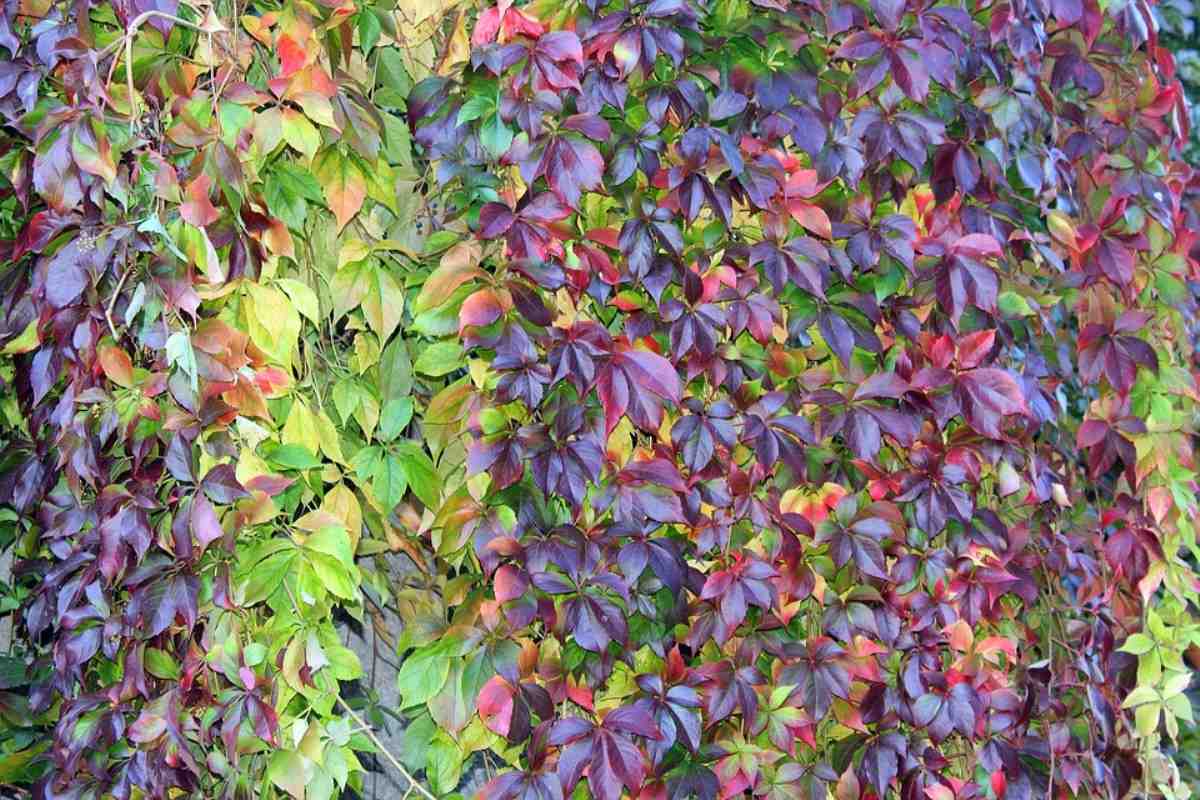
This gorgeous plant is perfect to make a beautiful fence along with your garden. The colors of the leaves change with the passing of the season and they are a perfect accompaniment to the garden. It is best to ensure that their soil is not too soggy and receive plenty of sunlight and shade. In the fall or autumn, see their leaves turn into different colors adding vibrancy to the home garden.
Allamanda blanchetii
This creeper plant gets pink-tinted flowers and changes color in the winter season. The highest height this creeper can gain is 9 to 18 feet. This plant requires full sunlight or light shade to grow well. In winters, this creeper plant requires soil that is not very moist.
Ivy creeper
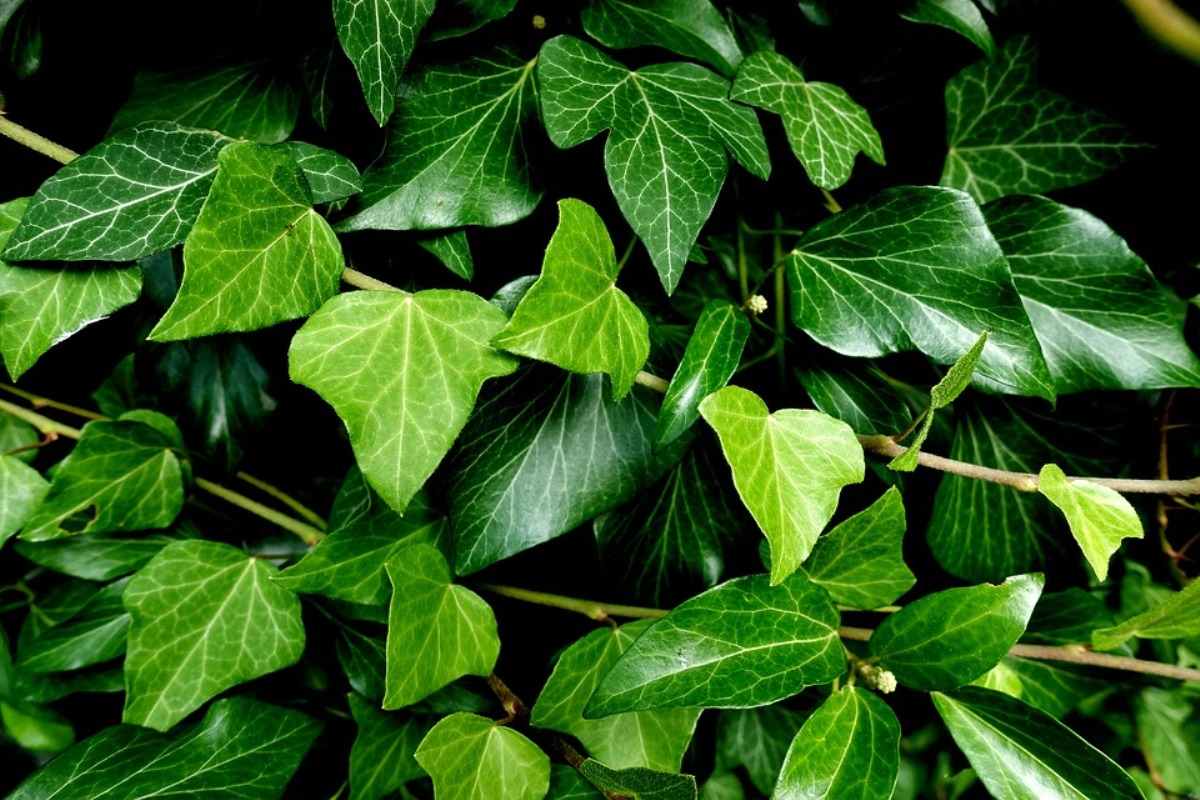
This creeper can gain growth of about 50 feet. With five leaflets, the green leaves have a tint of red when they first appear. Unlike other creepers that require support, Ivy plant can stand alone as well. This plant grows faster and the blooming season is June to August.
Pyrostegia venusta
This creeper plant can grow to a height of 15 feet. It gets an orange color trumpet-shaped flower and can produce in sun or semi-shade areas. The flowering takes place in summer months, which is February, March, and April.
Mandevilla
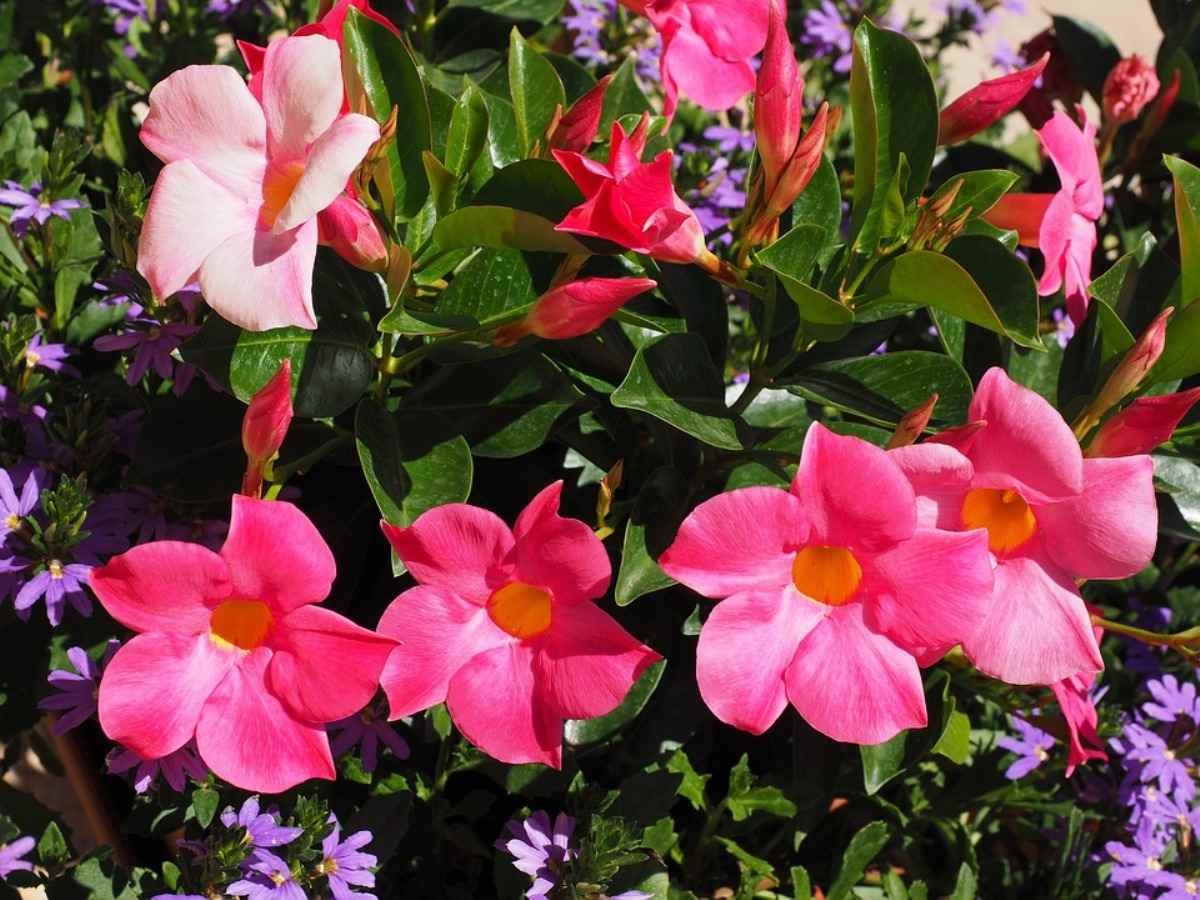
Excellent addition to home or backyard, the creeper has red and white flowers. Its growth is slow however looks beautiful and flowers round the year. This creeper plant needs shade and gets burnt in sunlight. It needs support to grow and ensure you put up a trellis to make it grow well.
You can also consider to read the Big Leaf Plants List.
Malpighia
This creeper plant produces small white flowers and does not gain too much height (1 to 2 meters). It can be attached to aluminum wire and can be trained to make shapes. It flowers throughout the year and this creeper is good to create bonsai, attracts bees, can grow in full sunlight and requires well-drained soil.
Aparajita
This plant produces blue color flowers. It blossoms all through the year producing delicate blue color flowers. Besides reducing stress and enhancing memory, this creeper is helpful to alleviate pain, swelling, etc.
Cardinal climber
This cardinal climber plant gets red color trumpet shape flowers and blossoms during the summer season. Rich soil and additional fertilizer are not necessary for the growth of this creeper. In the case of a young plant, water it regularly tills it reaches 1 to 2 inches. This climber is generally pest-free.
Creeping Jenny (Lysimachia nummularia)
Creeping Jenny plant spread quickly so position plants 18 inches apart in moist soil and full sun to part shade. Creeping Jenny plant brings mats of low-lying chartreuse color to gardens and containers. Creeping Jenny plant needs consistently moist, but not soggy, soil.
Creeping thyme
Creeping thyme plant is available at many garden stores during the planting season and it will come as plugs or small potted cuttings. These plants normally stay short and can be effective ground covers. The soil must be kept moist but not wet, as the growing, this plant is susceptible to root drowning and edema.
Creeping myrtle (Vinca minor)
Creeping myrtle plant is one of those rare perennial evergreen ground covers that flower. Creeping myrtle grows best in evenly moist, rich, well-drained soil with a pH level of 6 to 8, although it will adapt to average soil. It prefers partial shade but the plants will grow in full shade and makes an excellent ground cover beneath shade trees.
Japanese spurge
Japanese spurge is also called Pachysandra. This plant works perfectly as a mulch substitute under the canopies of large shade trees, where not much else will produce.
Creeping junipers
Creeping juniper plant is a low-growing evergreen shrub that is often used as a ground cover. This low-growing evergreen ground cover is a tough perennial plant that you can generate at any time between early spring and late fall.
Angelina stonecrop
Angelina stonecrop is a fast-growing plant that stays short (around 6 inches tall) and speedily spreads to form a mat, making it an easy-to-grow ground cover. This plant bears yellow flowers. But this drought-tolerant sedum is highly valued as a ground cover with chartreuse foliage.
Types of creeper plants
Different types of creeper plants are given below;
Flowering Creepers
Many creepers produce numerous and striking flowers. Pussytoes (Antennaria carpatica) have gray-green to silver foliage and they grow 1 to 2 inches tall and spread in a 12-inch pattern.
Moss-like Creepers
Irish moss (Sagina subulata) plant produces a low, dense, moss-like mat of bright green foliage. Tiny white flowers appear in the spring, and it is a general creeper to grow between flagstones, in a rock garden or as a lawn substitute.
Why not reading about Growing Spinach Hydroponically.
Curtain Creeper
This plant is called parda bel in India, grown particularly for its nature of forming a curtain-like gallery and spectacular green display on the wall.
Rangoon Creeper
Rangoon Creeper is also called as Madhumalti in India. This plant is used as herbal medicine and found in secondary forests of India.
Railway Creeper
Railway Creeper is a species of morning glory and one of the most general evergreen creepers found in gardens and around railway stations. This is a medicinal plant found in India.
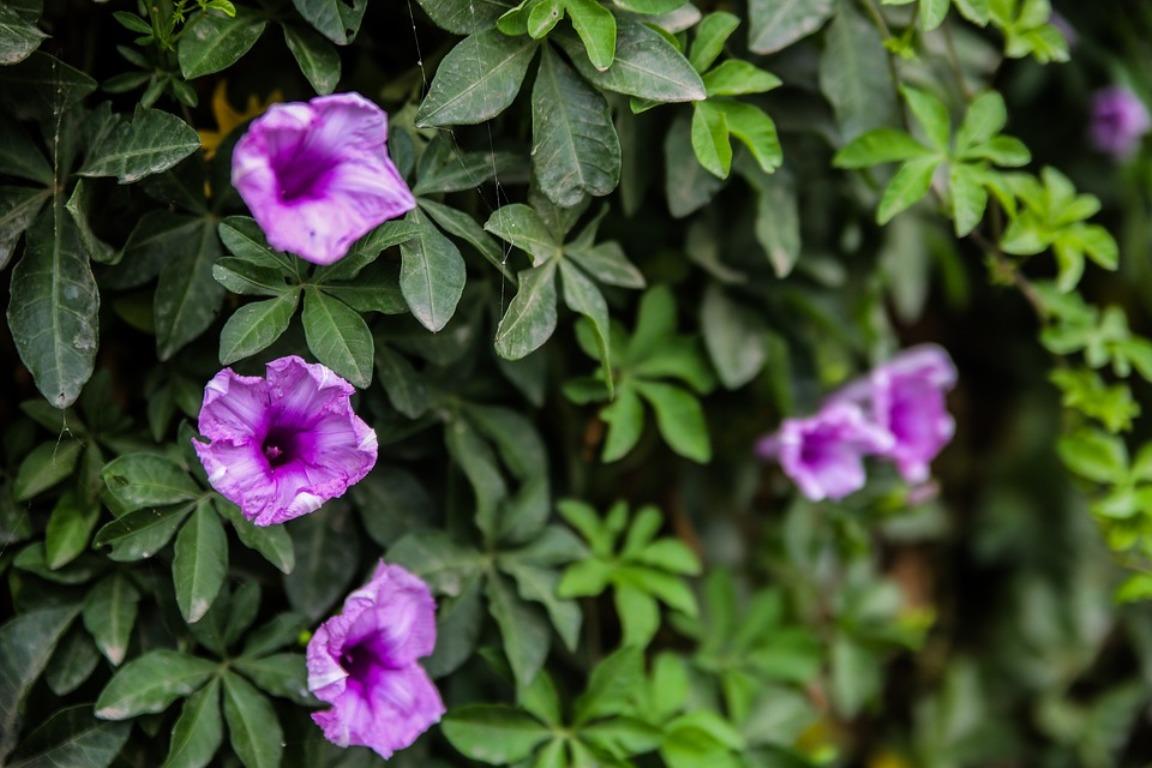
Fruiting Creepers
Some creeper plants bear noticeable fruit after flowering. The best example is the Mock Strawberry plant, which is a fast-growing plant, similar to regular strawberry in appearance.
Potting Creeper plants
Creepers should be generally planted in the ground but if you plan to use a pot, you should use one with a diameter of at least 20 inches.
Creeper plants maintenance and care
- The creeper plants care is one of the important tasks of your garden
- Creeper plants not only provide a garden with aesthetic beauty but also make the environment more peaceful and stress-free.
- To give the creeper plant shape, you can use an aluminum wire or use coconut twine.
- Water the creeper plant daily otherwise the plants will start shedding flowers.
- Creepers require a garden bed to grow, but if you do not have a full-fledged garden they can also be grown in pots and plant them during spring to see it bloom in summer.
- You want a compost-rich soil to see your creeper plants blossom beautifully.
- Water your creeper plants to keep their soil moist. They do not require too much water; else their stems will begin to rot quickly.
- Indian climate is tropical and sub-tropical, making it ideal for several types of creepers to grow.
Hope you enjoyed the article and don’t hesitate to leave a comment on creeper plants care.
You may be interested in Gherkin Farming in India.